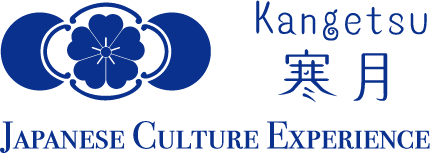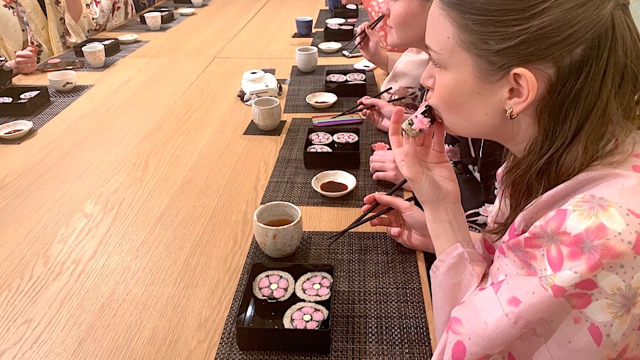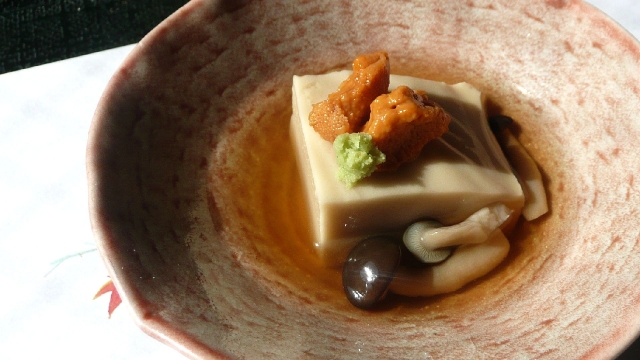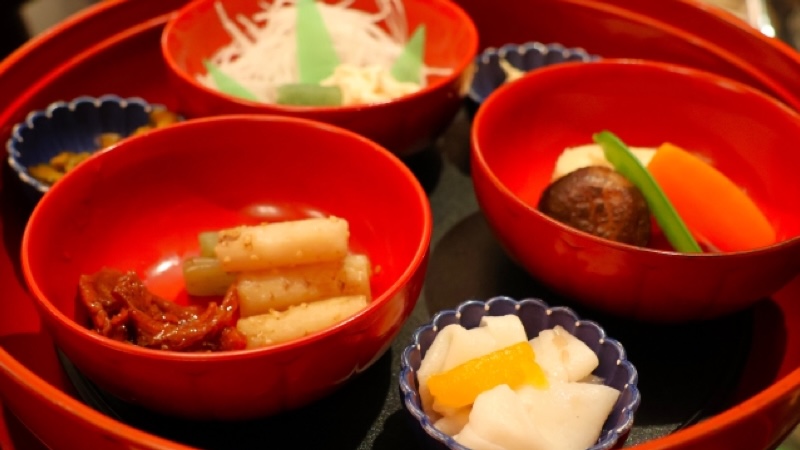Experience Japan's Traditional Card Game "Hanafuda"日本の伝統カードゲーム「花札」体験
"A Moment to Hold Japan's Tradition"
Welcome to the Hanafuda Experience Course!
Would you like to experience the traditional Japanese card game "Hanafuda" using vibrant cards? You can engage with Japanese culture through cards depicting the beauty of the seasons and various plants and animals.
In this experience course, we will provide a thorough guide from explaining the basic rules to strategies and ways to enjoy the game that incorporates Japan's seasonal culture, all designed to be enjoyable for beginners.
Discover new ways to enjoy Japanese culture while competing with friends and family!

Examples of Hanafuda Class Activities
Hanafuda is a traditional card game that uses 48 cards depicting Japan's seasons and nature. A representative way to play it is called "Koi Koi," which features easy-to-remember rules for beginners.
Here, we will introduce the basic rules of "Koi Koi."
1. Types of Cards
Hanafuda consists of sets of 4 cards themed around the 12 months, total of 48 cards.
The cards are classified into four types: "Hikari" (Light) cards, "Tane" (Seed) cards, "Tanzaku" (Strip) cards, and "Kasu" (Waste) cards, each with different point values.

2. Objective of the Game
The goal of Hanafuda is to combine cards to create "yaku" (combinations) and earn points.
Ultimately, the player with the highest total score wins.

3. Basic Flow of the Game
The game setup is done for two players. Shuffle the cards well and deal 8 cards to each player, with another 8 cards placed face-up in the center. The remaining cards form the draw pile.
On your turn, play one card from your hand. If there is a card of the same month in the center, you can pair them. If you cannot take a card, it remains in the center. Then, draw a card from the pile and place it in the center, again trying to pair it with the same month card, or it will stay in the center.
Points are added when you create "yaku" with specific combinations. For example, you can create yaku by collecting certain "Hikari" cards or "Tanzaku" cards.

4. "Koi Koi" and Ending the Game
When you create a yaku, you can declare "Koi Koi" to continue the game. This gives you a chance to earn more points, but if your opponent finishes first, you risk scoring zero.
You can also end the game without declaring "Koi Koi" when you have a yaku; in this case, the points of the yaku become your score.

5. End of the Game
The game ends when both players have no cards left. The player with the highest total score is declared the winner.

6. Examples of Yaku
Inoshikachō: Composed of Seed cards for boar, deer, and butterfly (5 points)
Hanami de Ippai: Cherry blossom Hikari card from March and chrysanthemum Seed card from September (5 points)
Tsukimi de Ippai: Pampas grass Hikari card from August and chrysanthemum Seed card from September (5 points)
"Koi Koi" is a game that balances strategy and luck. You can become more familiar with the rules through repeated play and enjoy it even more.

Hanafuda and Children's EducationExploring Japanese Traditional Card Games for Child Development
Educational Benefits of Hanafuda for Children's Growth
Hanafuda is a traditional Japanese card game made up of 48 cards depicting flowers and plants that symbolize the 12 months.
The history of this game dates back to the Edo period, initially enjoyed by the common people.
Today, it is manufactured by companies like Nintendo and continues to be loved by many Japanese people.
- Promoting Cultural Understanding
- The cards of Hanafuda feature flowers and plants related to each month, from pine in January to paulownia in December.
This design is deeply connected to Japan's seasons and nature, making it an excellent educational resource for children to deepen their understanding of Japanese seasons and plants.
Hanafuda provides a valuable opportunity to experience Japan's traditional culture and engage with its history and aesthetic values. - Improving Observation and Memory Skills
- In Hanafuda, understanding the designs and rules of each card, as well as remembering the opponent's cards and your own, is crucial.
This naturally trains observation and memory skills, especially as children hone these abilities while enjoying the game. - Developing Strategic Thinking
- Hanafuda requires strategic thinking in how to use your cards and anticipate your opponent's actions.
To win, players need to consider not just the cards they play, but also the next moves and possibilities of their opponent, which fosters logical thinking and planning skills. - Encouraging Interaction and Communication
- Hanafuda is a multiplayer game that cultivates dialogue skills through communication with others.
Through conversations and competitions during the game, players can share enjoyable moments with friends and family while naturally learning etiquette and manners.
Educational Uses of Hanafuda
- Application in Social Studies and Language Arts Classes
- Hanafuda is an effective teaching material for social studies classes that focus on Japan's seasons and plants, as well as language arts classes that relate to Japanese literature such as waka and haiku.
For example, activities can be incorporated where students research the plants and animals depicted for each month and learn how they have influenced Japanese culture. - Incorporating into Club Activities or Special Classes
- By introducing Hanafuda as a club activity in schools, children can learn in a fun environment after school.
It is also suitable for cultural experience classes for foreign students, providing them with a great opportunity to deepen their understanding of Japanese culture.
Educational Use of Hanafuda
- Incorporation in Social Studies and Language Classes
-
Hanafuda can be an effective teaching tool in social studies, helping students learn about Japan’s seasons and flora. It is also useful in language classes, where students can explore traditional Japanese literature, such as haiku and tanka.
For example, students can research the plants and animals depicted for each month and discuss their cultural significance in Japan. - Use in Club Activities or Special Classes
-
Introducing Hanafuda as a club activity provides students with an engaging way to learn after school.
It is also ideal for cultural experience classes aimed at foreign students, offering them an enjoyable opportunity to deepen their understanding of Japanese culture.
Hanafuda Themes Through the Year
January: Mutsuki – Pine and Crane
This card features a crane and pine tree, symbolizing longevity and resilience in Japanese culture. These motifs are often associated with celebrations, particularly during New Year.
The tanzaku (poem strip) is read like “Aka Yoroshi,” meaning “clearly good” or “very favorable.”

February: Kisaragi – Plum Blossom and Bush Warbler
The combination of plum blossoms and bush warbler represents early spring in Japan. Known as the “harbinger of spring,” the bush warbler symbolizes the season’s arrival, while the plum blossom, blooming after a harsh winter, stands for endurance and vitality.
The tanzaku also is read like “Aka Yoroshi,” reinforcing positive meanings.

March: Yayoi – Cherry Blossoms and Curtain
Cherry blossoms, a symbol of Japan, are depicted alongside a "curtain," evoking the atmosphere of traditional festivals and ceremonies.
The curtain, resembling those used in theater or events, symbolizes elegance and festivity.
Together, they portray the joy and celebration of spring, a familiar sight in Japanese culture.
The tanzaku is read like “Miyoshino,” referring to the beautiful cherry blossoms of Yoshino Mountain in Nara. This phrase echoes a poem by Emperor Gotoba: “Miyoshino no takane ni sakura chirinikeri, arashi mo shiroki haru no akebono.”

April: Uzuki – Wisteria and Cuckoo
Wisteria and cuckoo symbolize early summer and depict the serene beauty of nature in Japan.
Wisteria, with its cascading purple flowers, represents elegance and has been celebrated in Japanese culture since the Heian period.
The cuckoo, heralding summer, frequently appears in traditional Japanese poetry.

May: Satsuki – Iris and Eight Bridges
The iris, blooming in early summer, is known for its vivid purple color and its reflection in Japanese gardens and wetlands.
The "Eight Bridges" refer to a scene from "The Tales of Ise," where the poet Ariwara no Narihira composed a famous waka poem. This pairing of iris and bridges is deeply rooted in Japan's cultural and literary heritage.

June: Minazuki – Peony and Butterfly
The peony, often called the "King of Flowers," symbolizes wealth and beauty in Japanese culture.
The butterfly, with its delicate flight, represents transformation and the fleeting nature of life.
This pairing captures the elegance and vibrance of early summer, a beloved scene in Japan.

July: Fumizuki – Bush Clover and Boar
Bush clover, one of the seven autumn flowers, signifies the arrival of autumn in Japan.
Its delicate flowers swaying in the wind evoke a serene autumnal atmosphere.
The boar, known for its strength and vitality, often becomes more active in autumn, complementing the bush clover.
In Japanese culture, the boar symbolizes good fortune and protection from illness.

August: Hazuki – Pampas Grass, Moon, and Wild Goose
This card epitomizes the beauty of Japanese autumn, featuring pampas grass under a full moon.
The "Pampas Grass and Moon" combination is one of the special "light cards," evoking a tranquil autumn night.
The moon has a mystical beauty in Japanese culture, and the "harvest moon" is a cherished symbol of autumn.
The wild goose, an autumn migratory bird, adds to the seasonal ambiance, symbolizing the changing seasons.

September: Nagatsuki – Chrysanthemum and Cup
Chrysanthemums are iconic autumn flowers in Japan, symbolizing elegance and longevity.
They have been cherished since the Heian period, especially during the Chrysanthemum Festival (Chōyō no Sekku, September 9).
The cup in this card represents *kikusake* (chrysanthemum sake), believed to ward off evil and bring long life.
This pairing evokes Japan's autumnal traditions and the refined beauty of the season.

October: Kannazuki – Maple and Deer
Maples symbolize the deepening of autumn, their vibrant colors painting the landscapes of Japan.
Deer have long been associated with Japan's natural beauty, especially in Nara and autumnal mountains.
Their cries evoke the melancholic yet serene atmosphere of autumn, often celebrated in Japanese poetry.
The phrase "Shikato" (meaning "to ignore") originates from this card, as the deer seems to turn away.
"In the depths of the mountains, treading on crimson leaves, I hear the deer cry. Truly, autumn's sadness." — A classical poem capturing the essence of this scene.

November: Shimotsuki – Willow and Ono no Michikaze
This card depicts the famous Heian-era calligrapher Ono no Michikaze.
According to legend, he was inspired by a frog repeatedly trying to jump onto a willow branch, symbolizing perseverance and eventual success.
The scene conveys the values of determination and self-improvement.

December: Shiwasu – Paulownia and Phoenix
The paulownia tree, known for its rapid growth, has long been considered auspicious in Japan.
Its motifs often appear in traditional patterns and family crests.
The phoenix, a mythical bird symbolizing peace and prosperity, resting on the paulownia signifies an ideal world and stability.
The phrase "Pin to Kiri" (from top to bottom or start to finish) originates from this card, with "Kiri" referring to paulownia.


















